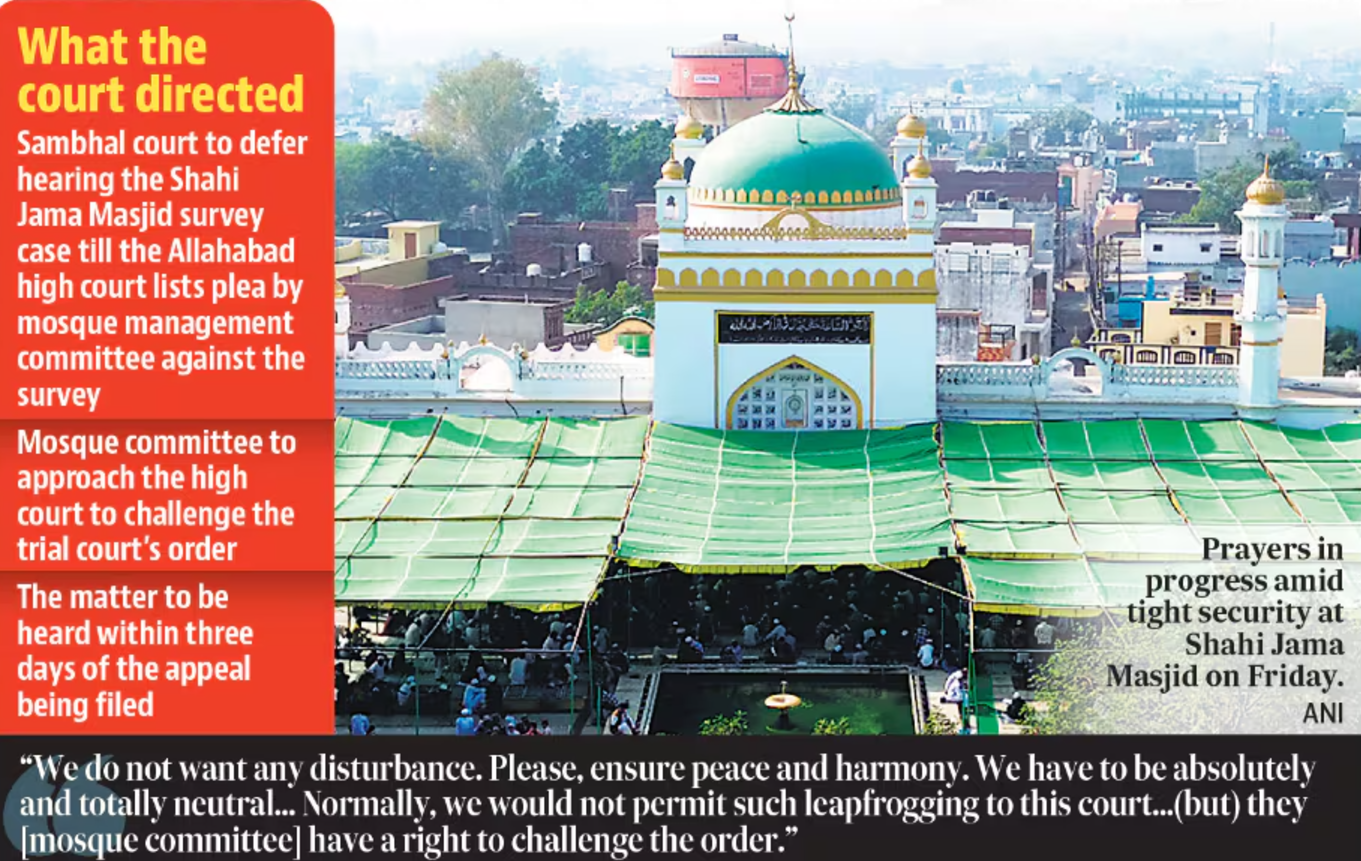Sambhal’s Jama Masjid: A Historic Monument at the Heart of Legal and Communal Disputes
(Source: Indian Express; Section: Explained; Page: 17)
| Topic: GS1 – History |
| Context: |
|
Analysis of News:

Historical Background of the Jama Masjid, Sambhal
- The Jama Masjid in Sambhal, Uttar Pradesh, constructed in 1526 by Mir Hindu Beg, an official under Mughal emperor Babur, is among the oldest surviving Mughal-era mosques in India.
- Its history reflects Sambhal’s evolution through various empires, from Ashoka’s reign to its role under the Delhi Sultanate and Mughals.
- Notable for its architectural significance, it combines local craftsmanship with Sultanate styles, as documented by historians like Catherine Asher and Ebba Koch.
- Despite later renovations, its design anticipates Babur’s subsequent mosques at Panipat and Ayodhya.
Legal and Religious Disputes
- The mosque has been embroiled in legal disputes for over a century. The Hindu side claims it was built by demolishing a Vishnu temple, citing features such as a path for circumambulation (parikrama) and temple-like columns.
- However, these assertions have been contested in courts since 1878. Earlier rulings dismissed such claims, citing uninterrupted Muslim use and lack of substantial evidence.
- Recent petitions reignited the controversy, with surveys and claims of historical artifacts fueling tensions.
Architectural and Historical Perspectives
- Historians are divided on whether temple remnants were incorporated into the mosque.
- While some highlight features suggestive of Hindu temple origins, others argue these reflect overlapping architectural styles rather than deliberate appropriation.
- Scholars emphasize that the mosque aligns more with decaying Sultanate architecture than distinct Mughal or Hindu traditions.
- Furthermore, the absence of a persistent historical conflict at the site undermines claims of intentional religious symbolism.
Contemporary Implications
- The renewed dispute over the Sambhal mosque mirrors broader patterns of communal and historical contestations in India.
- The Supreme Court’s involvement underscores the sensitivity of such cases, balancing religious sentiments and historical narratives.
- The ongoing legal processes and violent clashes surrounding the site highlight the need for careful adjudication, rooted in evidence rather than mythology.
- This case exemplifies the complexities of interpreting shared cultural and architectural legacies in a polarized socio-political context.
| Practice Question: Examine the historical and architectural significance of the Jama Masjid in Sambhal and discuss the implications of legal and communal disputes over heritage sites in India. (250 words/15 m) |


